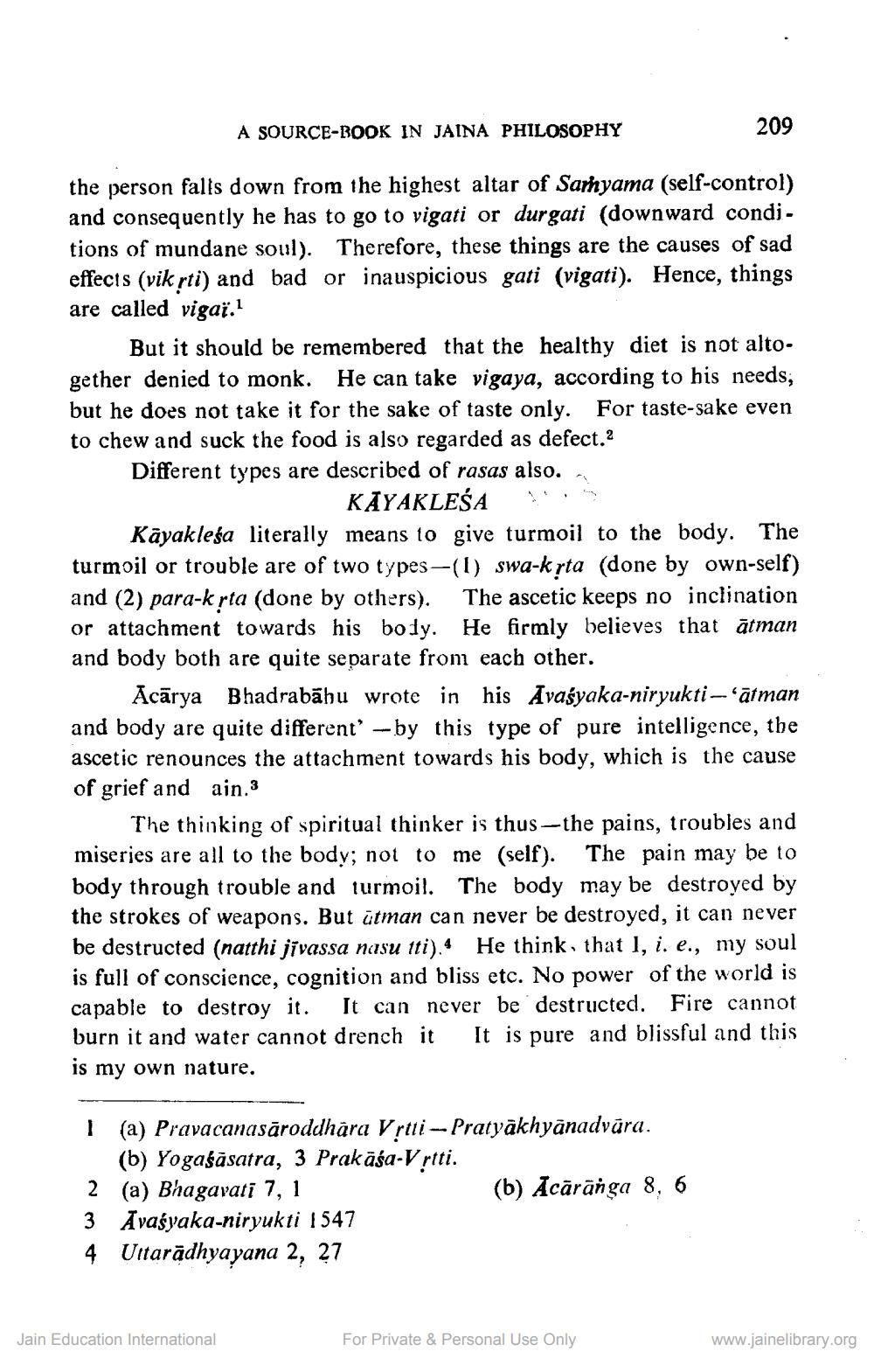________________
A SOURCE-ROOK IN JAINA PHILOSOPHY
209
the person falls down from the highest altar of Sarhyama (self-control) and consequently he has to go to vigati or durgati (downward conditions of mundane soul). Therefore, these things are the causes of sad effects (vik rti) and bad or inauspicious gati (vigati). Hence, things are called vigaz.?
But it should be remembered that the healthy diet is not altogether denied to monk. He can take vigaya, according to his needs, but he does not take it for the sake of taste only. For taste-sake even to chew and suck the food is also regarded as defect. Different types are described of rasas also.
KĀYAKLEŚA . Kāyakleša literally means to give turmoil to the body. The turmoil or trouble are of two types—(1) swa-k rta (done by own-self) and (2) para-k sta (done by others). The ascetic keeps no inclination or attachment towards his body. He firmly believes that ātman and body both are quite separate from each other.
Acārya Bhadrabāhu wrote in his Avaśyaka-niryukti-‘ātman and body are quite different -by this type of pure intelligence, the ascetic renounces the attachment towards his body, which is the cause of grief and ain.3
The thinking of spiritual thinker is thus - the pains, troubles and miseries are all to the body; not to me (self). The pain may be to body through trouble and turmoil. The body may be destroyed by the strokes of weapons. But utman can never be destroyed, it can never be destructed (natthi jivassa nasu tti). He think that I, i. e., my soul is full of conscience, cognition and bliss etc. No power of the world is capable to destroy it. It can never be destructed. Fire cannot burn it and water cannot drench it It is pure and blissful and this is my own nature.
| (a) Pravacanasāroddhāra Vrtti-Pratyākhyānadvūra.
(6) Yogaśāsatra, 3 Prakāśa-Vrtti. 2 (a) Bhagavati 7, 1
(b) Ācārānga 8, 6 3 Āvaśyaka-niryukti 1547 4 Uttarādhyayana 2, 27
Jain Education International
For Private & Personal Use Only
www.jainelibrary.org




